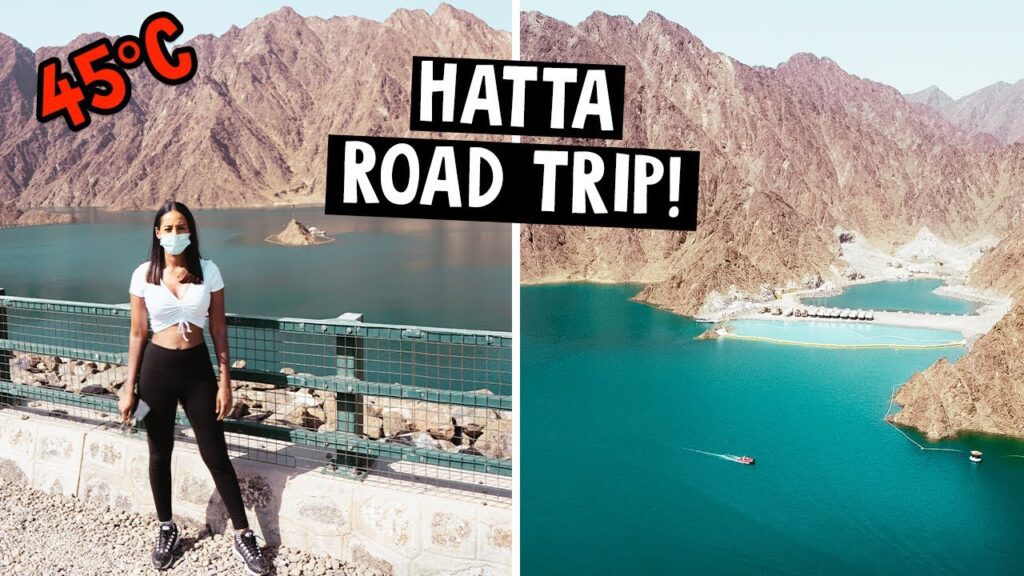The Hatta Border, located on the outskirts of Dubai, serves as a crucial point for travelers entering the emirate from Oman. As a prominent gateway between the UAE and its neighbor Oman, this border area has not only become a vital trade and transport route but also an important location for tourists seeking to explore the beauty of the Hajar Mountains, the charm of the Hatta region, and the surrounding desert landscapes. With its strategic position, the Hatta Border represents a blend of culture, history, and adventure.
In this article, we will dive into the significance of the Dubai Hatta Border, its key features, its role in the regional economy, and the opportunities it offers for tourists looking to explore the natural beauty of the UAE’s mountain regions.
Location and Accessibility
The Hatta Border is situated approximately 115 kilometers southeast of Dubai, lying between the Emirate of Dubai and Oman. This border connects Dubai to Hatta, a small town nestled in the foothills of the Hajar Mountains, offering visitors access to the mountainous desert landscape of the UAE. It is the primary crossing point for those traveling between the UAE and Oman, whether for trade, tourism, or daily commuting.

Hatta itself is renowned for its picturesque surroundings, including mountains, valleys, and dams, providing a stark contrast to the urban landscapes found in the larger cities of the UAE. The drive to the border takes visitors through the striking desert landscapes of the UAE, where visitors can also experience the desert dunes and rocky terrain.
While the border’s main purpose is to facilitate the movement of goods and people, the area’s growing appeal as a tourist destination has led to the development of numerous attractions, including the Hatta Dam, Hatta Mountain Bike Trail, and various hiking routes.

Border Crossing: Process and Regulations
To cross the Dubai Hatta Border, travelers must go through the customs and immigration process. The requirements and procedures for crossing the border may vary depending on the traveler’s nationality and the type of vehicle used.
1. For UAE Nationals and Residents
UAE nationals and residents can cross the Dubai Hatta Border with relative ease. UAE nationals typically carry their Emirates ID cards, which also serve as their passport for traveling within the Gulf Cooperation Council (GCC) countries. GCC nationals may also use their national IDs for travel between the UAE and Oman.
UAE residents with a valid Emirates ID are permitted to enter Oman through the border. However, they must ensure that they comply with visa requirements for Oman, as the visa-free entry available to GCC nationals does not extend to UAE residents who are not citizens.
2. For Tourists and Non-GCC Nationals
For tourists or non-GCC nationals, crossing the Hatta Border involves obtaining an Omani visa. Visitors who are not from GCC countries will need to apply for a visa to enter Oman, which can be done either online or through the Omani consulate. It is essential to check the visa requirements ahead of time to avoid any travel disruptions.
Travelers are also required to complete the customs declarations, which may involve submitting personal details, information about any goods they are carrying, and clearing any customs checks. The border customs process typically involves a brief wait, especially during peak travel periods.
3. Car and Vehicle Requirements
For those traveling by car, it is essential to ensure that the vehicle is properly registered and insured for entry into Oman. UAE-registered vehicles can cross the border with the necessary paperwork, but it’s important to ensure that the insurance policy covers travel in Oman.
In some cases, travelers may also need to provide proof of ownership or permission to drive the vehicle if it’s rented. Those traveling in caravans or with large trailers must ensure that they comply with Omani road safety regulations and obtain any necessary permits.
Tourism and Attractions in Hatta
While the Dubai Hatta Border primarily serves as a transit point, it has also evolved into a popular entry point for tourists seeking to explore the natural beauty and recreational activities in the Hatta region. The Hatta area is known for its stunning mountain scenery, outdoor adventures, and heritage sites. Some of the most popular attractions in Hatta include:
1. Hatta Dam and Kayaking
Hatta Dam is one of the main highlights of the region. The dam, surrounded by rugged mountains and crystal-clear water, offers visitors a peaceful environment for relaxation and water-based activities such as kayaking, paddle boarding, and boating. Tourists can hire kayaks and explore the calm waters, taking in the scenic views of the mountains and surrounding nature.
2. Hatta Heritage Village
For those interested in the culture and history of the UAE, a visit to Hatta Heritage Village is a must. The village is a beautifully preserved example of traditional UAE architecture and provides insights into the lifestyle of the region’s people centuries ago. The village showcases various artifacts, including ancient tools, pottery, and traditional houses, offering a glimpse into the country’s rich heritage.
3. Hatta Mountain Bike Trail
Adventure enthusiasts will find plenty to do in Hatta, especially when it comes to outdoor activities like mountain biking. The Hatta Mountain Bike Trail is one of the most popular trails in the UAE, offering different levels of difficulty for cyclists of all skill levels. The trail weaves through the mountains and provides riders with a thrilling experience amidst stunning natural scenery.
4. Hatta Wadi Hub
The Hatta Wadi Hub is a unique adventure park that offers a variety of outdoor activities such as zip-lining, archery, rock climbing, and hiking. It’s an ideal place for families and adventure seekers to enjoy an active day out in nature.
5. Hatta Fort Hotel
For those looking to relax in comfort after a day of adventure, the Hatta Fort Hotel offers a beautiful retreat with panoramic views of the mountains and surrounding landscapes. The hotel provides luxury accommodations, a variety of dining options, and easy access to the region’s attractions.
The Future of the Dubai Hatta Border
As the UAE continues to invest in tourism infrastructure, the Dubai Hatta Border is likely to see further development. Both the UAE and Oman have recognized the potential of the Hatta region as a tourism destination, and new projects are expected to improve access to the area. This includes improvements to roads, border facilities, and tourist services to ensure a smooth and enjoyable experience for travelers crossing the border.
Additionally, the growth of the tourism sector in the Hatta area is likely to lead to the expansion of accommodation options, restaurants, and entertainment venues to meet the growing demand from visitors.
Conclusion
The Dubai Hatta Border is more than just a point of entry between two nations—it is a gateway to a region rich in natural beauty and adventure. Whether you’re driving through for business or stopping to explore the mountains, valleys, and cultural heritage of Hatta, the border is an essential feature of Dubai’s connectivity with the wider Gulf region. The area’s development into a key tourist destination is poised to make the Dubai Hatta Border an even more significant and vibrant part of the UAE’s landscape in the years to come.
Do follow Uae stories for more Updates
Dubai’s Turtle Rehabilitation Project: Saving Sea Turtles One Step at a Time














